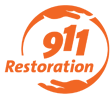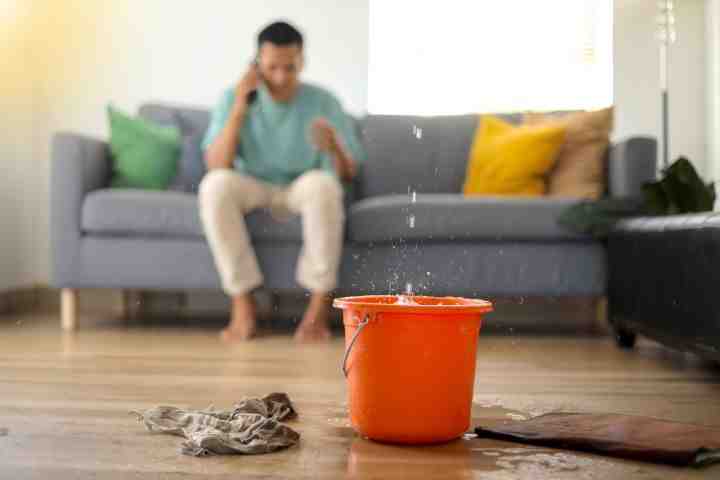Categories of Water Damage
Water damage can occur in many forms, and understanding the different categories is key to addressing the issue effectively. The type of water involved significantly impacts the level of contamination and the necessary steps for proper restoration. From clean water to more hazardous grey and black water, recognizing the category of water damage helps homeowners and property managers take the appropriate action. By understanding these categories, it’s possible to minimize damage and ensure a safer, more efficient recovery process.
Water damage disrupts lives and causes extensive property damage. It can lead to structural problems and health risks if not handled swiftly and professionally. Reliable restoration services are essential in navigating these challenges, helping to safeguard the integrity of your home or business.
My name is Allen Andra, owner of 911 Restoration of The Inland Empire. With a wealth of experience in disaster restoration, my team is dedicated to managing all Categories of Water Damage efficiently and restoring your property to its former glory. Stay with us to dive deeper into understanding how we tackle each category of water damage.
Understanding Categories of Water Damage
When water damage strikes, understanding the Categories of Water Damage is crucial for taking the right action. Water damage is classified into three categories based on contamination levels, water sources, and health risks. Let’s break these down:
Category 1: Clean Water
Category 1, also referred to as Clean Water, originates from uncontaminated sources such as a broken water supply line or a leaking faucet. Because it’s free from harmful bacteria and contaminants, it poses minimal health risks in its initial state. However, if left untreated or exposed to contaminants over time, even Clean Water can degrade and potentially become more hazardous. Promptly addressing any water damage, even of the clean variety, is still crucial to prevent further complications and preserve the health and safety of the environment.
Typical sources include:
- Broken supply lines: When a pipe carrying clean water bursts.
- Rainwater: Fresh rain collected before it contacts the ground.
- Melting snow: Snow that enters a property without picking up contaminants.
These scenarios involve water that’s safe to handle and doesn’t pose a significant health threat. However, if not addressed promptly, even clean water can lead to mold growth and structural damage.
Category 2: Grey Water
Category 2, or Grey Water, contains contaminants that are less harmful than those found in Black Water but can still pose health risks. This type of water typically comes from sources like washing machine overflows, dishwashers, or sinks. While it may not be immediately dangerous, Grey Water can cause discomfort or illness if ingested or if it comes into prolonged contact with the skin. It’s important to handle Grey Water with care and take proper precautions when dealing with any water damage of this nature to prevent potential health issues.
Common sources include:
- Washing machine overflow: Water mixed with detergent and dirt.
- Dishwasher leaks: Water containing food particles and soap.
- Shower or bathtub overflow: Water with soap scum and body oils.
Grey Water requires more careful handling due to its potential health risks. It often involves cleaning agents or organic matter that can encourage microbial growth.
Category 3: Black Water
Category 3 water, or Black Water, is the most dangerous type of water damage and carries significant health risks. This category includes water contaminated by sewage, floodwaters from oceans or rivers, or water exposed to toxic substances. Black water is filled with harmful pathogens and bacteria, making it highly unsanitary and a serious threat to health. Immediate action is essential when dealing with this type of water damage to prevent further harm and contamination.
Examples include:
- Sewage backups: Water contaminated with raw sewage.
- Floodwaters: Water mixed with soil and debris from storms.
- Standing water: Stagnant water that promotes microbial growth.
Black Water requires immediate and professional intervention. It poses serious health risks and can lead to long-term damage if not treated correctly.
Understanding these Categories of Water Damage helps you respond appropriately and minimize risks. Stay informed to protect your property and health effectively.
Classes of Water Damage
Water damage isn’t just about the source of the water—it’s also about how deeply it impacts your property. That’s where the Classes of Water Damage come into play. These classes offer a structured way to assess the severity of water intrusion and guide the drying and restoration process. Understanding the different classes helps professionals determine the appropriate response and resources needed to effectively restore the affected areas.
The classes range from minimal to severe, depending on the amount of water involved and how far it has spread. The goal is to ensure that all affected materials are properly treated and that the risk of further damage, like mold growth or structural issues, is minimized. Whether it’s a small leak or a major flood, recognizing the Class of Water Damage is a key step in crafting the right restoration plan to bring your property back to its pre-damaged condition.
Class 1: Minimal Intrusion
Class 1 water damage is the least severe type, typically involving minimal water intrusion and affecting only a small area. This could be something like a small leak that dampens a corner of a room. The materials in contact with the water absorb very little moisture, which makes them relatively easy to dry and restore.
Since the damage is limited, the restoration process is generally quick and straightforward, with little risk of long-term complications. However, even small amounts of water should be addressed promptly to prevent any potential for further damage or mold growth.
- Limited Area: Only a part of a room is affected.
- Minimal Absorption: Materials like carpet may be slightly damp, but structural elements remain largely unaffected.
Class 2: Significant Intrusion
Class 2 water damage is more serious, as water has spread throughout an entire room, soaking carpets, padding, and sometimes even furniture. It also affects structural materials like subfloors and walls, though the water typically doesn’t rise higher than 24 inches. While the damage is more widespread, it’s still manageable with proper restoration techniques. The longer the water remains, the more it can compromise materials, leading to the potential for mold growth or weakened structures. Timely action is crucial to prevent the damage from escalating into a more severe situation.
- Entire Room: The whole room is involved, with water reaching various surfaces.
- Structural Materials: Water absorption affects wood, particle board, and even concrete, requiring more effort to dry.
Class 3: Extensive Saturation
Class 3 water damage occurs when water comes from overhead sources, such as a burst pipe or a leaky roof, causing extensive saturation of ceilings, walls, and floors. This type of damage is particularly challenging because the water affects nearly all materials in the area, including insulation, drywall, and flooring.
The widespread saturation makes the restoration process more complex and time-consuming, as it requires thorough drying and sometimes even structural repairs. Additionally, there is a higher risk of mold growth due to the prolonged exposure of materials to moisture. Prompt and professional intervention is essential to mitigate further damage and restore the affected space effectively.
- Overhead Sources: Water enters from above, impacting multiple levels.
- Saturated Materials: Everything from carpets to insulation is soaked, requiring comprehensive drying techniques.
Class 4: Specialty Drying Situations
Class 4 water damage refers to situations where water affects materials with low permeability, such as hardwood, plaster, and stone. These materials don’t absorb water easily, but when they do, the moisture tends to penetrate deeply, making it much harder to remove.
Because of their dense nature, these materials require specialized drying techniques and often more time to restore properly. The longer the water remains, the higher the risk of permanent damage, warping, or mold growth. Addressing Class 4 damage quickly and effectively is crucial to preventing further structural damage and ensuring the materials can be salvaged.
- Low Permeance Materials: Hard surfaces like concrete and brick are affected.
- Specialized Methods: Requires unique drying techniques and longer time to ensure thorough moisture removal.
Understanding the Classes of Water Damage is essential for effective restoration. Each class presents unique challenges that require specific methods to address. By knowing these classes, you can better manage the restoration process and minimize the impact on your property.
Water Damage Restoration Process
Restoring water damage involves several crucial steps to ensure your property returns to its pre-damage condition. Here’s a breakdown of the Water Damage Restoration Process:
Inspection
The first step is a thorough inspection. Professionals assess the extent of the damage and identify the water source. This is crucial to preventing further damage and determining the best course of action.
- Identify the Source: Locate and stop the water source to prevent additional damage.
- Assess the Damage: Evaluate the affected areas to understand the scope and plan the restoration.
Water Removal
Once the inspection is complete, the next step is water removal. This involves extracting standing water from the property using specialized equipment.
- High-Powered Pumps and Vacuums: Used to quickly remove large volumes of water.
- Prevent Further Damage: Swift removal helps prevent further saturation and reduces the risk of mold growth.
Drying
After water removal, the drying process begins. This step is essential to eliminate any remaining moisture that could lead to structural damage or mold.
- Dehumidifiers and Air Movers: These tools help to circulate air and remove moisture from the air and materials.
- Monitoring: Regular checks ensure that drying is progressing effectively and adjustments are made as necessary.
Repairs
Finally, repairs address any structural damage caused by the water. This can range from minor fixes to extensive construction work, depending on the severity of the damage.
- Replace Damaged Materials: Non-salvageable items like drywall and insulation may need replacing.
- Restore to Pre-Loss Condition: The goal is to make it “like it never even happened,” restoring your property to its original state.
Restoration is a complex process, but it’s essential for ensuring the safety and integrity of your property. By following these steps, professionals can effectively manage water damage and prevent future issues.
Frequently Asked Questions about Water Damage
What are the four classes of water damage?
Understanding the four classes of water damage is crucial for effective restoration. These classes help determine the extent of damage and the required drying process.
Class 1: Minimal Intrusion
- Affects only a small part of a room.
- Materials have low water absorption.
- Evaporation rates are slow.
Class 2: Significant Intrusion
- Water covers the entire room.
- Carpets, cushions, and walls are affected.
- Faster evaporation rates due to more materials absorbing water.
Class 3: Extensive Saturation
- Typically involves water from overhead sources.
- Saturates ceilings, walls, and floors.
- Fastest evaporation rates due to large areas being affected.
Class 4: Specialty Drying Situations
- Involves materials with low permeance like brick, stone, or concrete.
- Requires specialized drying methods due to slow evaporation rates.
How does insurance work for water damage?
Water damage insurance can be a lifesaver, but it’s important to understand the specifics of your policy.
- Claims: Coverage typically includes sudden and accidental water damage, like burst pipes or appliance failures.
- Exclusions: Gradual leaks or damage due to neglect are usually not covered. Flooding often requires a separate policy.
- Policy Limits: Many policies have sublimits for water damage, which can affect the amount covered. For example, you might have $300,000 in property coverage, but only $8,000 for water damage.
It’s crucial to review your insurance policy carefully to understand what is covered and take preventive measures to minimize risks.
The 911 Restoration Promise
At 911 Restoration of Inland Empire, we understand the stress and disruption that water damage can cause. Our mission is to provide quick, reliable, and comprehensive restoration services to help you get your life back on track. With a 45-minute response time and 24/7 availability, our team is always ready to tackle any water damage emergency, whether it’s a minor leak or a major flood.
Our services are not just about fixing the immediate problem but ensuring your property is restored to its pre-damage condition. We handle everything from thorough inspections and water removal to drying, cleaning, and necessary repairs. Our experts are trained to deal with all categories of water damage, ensuring your home or business is safe and sound.
We serve the Inland Empire and surrounding areas, including Highland, Redlands, Rialto, and Riverside, CA. Our commitment to excellence and customer satisfaction is reflected in our prompt service and attention to detail. You can rely on us to make your property feel like home again.
For more information on our water damage restoration services, visit our Water Damage Restoration page. At 911 Restoration of Inland Empire, we’re here to help you through every step of the recovery process, ensuring a fresh start and peace of mind.




